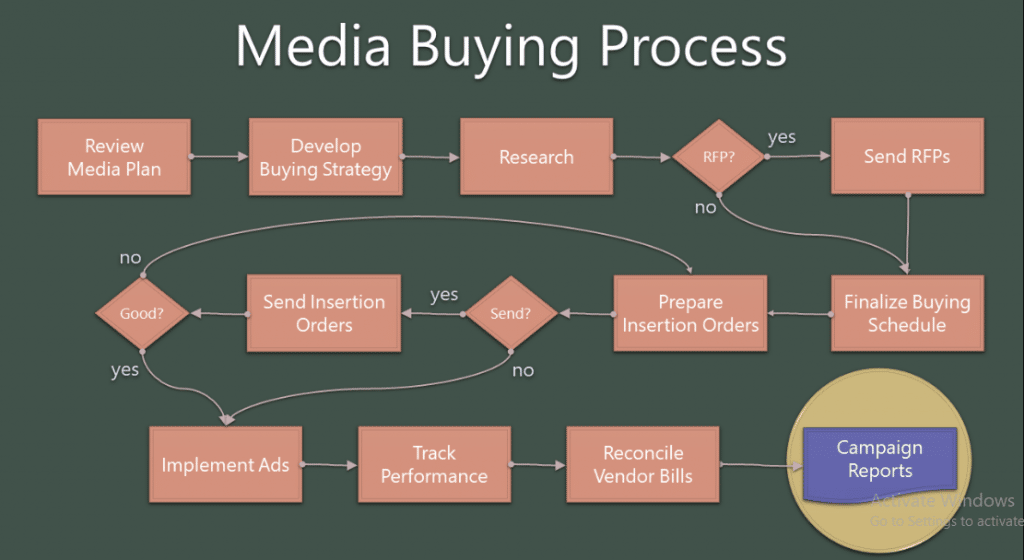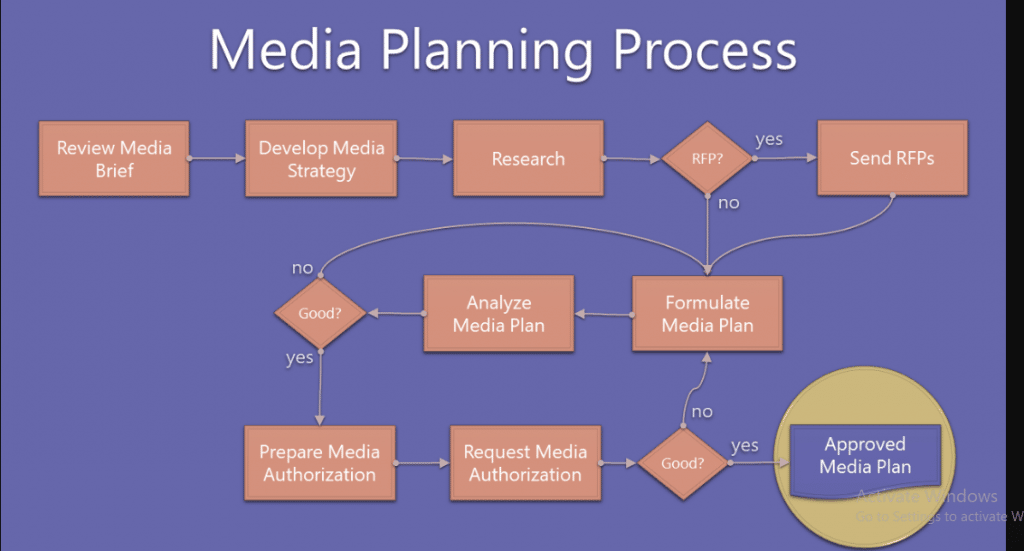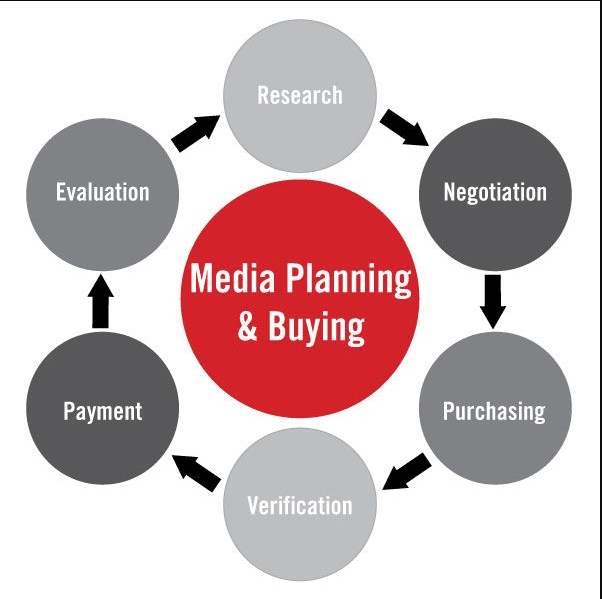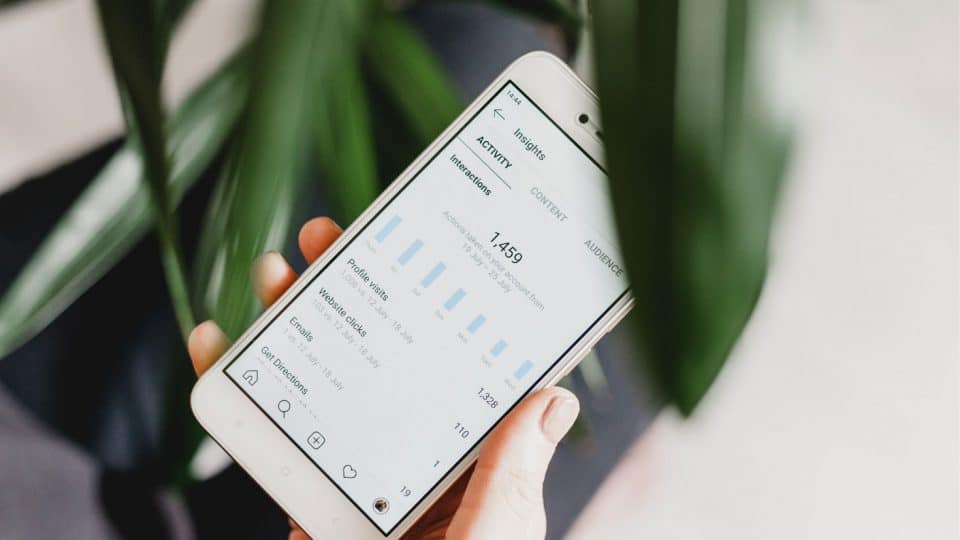Media Buying vs Media Planning – How they are different?
Media buying involves selecting a particular tv, newspaper or other kind of ad and targeting it for viewing by a selected group of audience. Take this example, an ad about a great brand of engine oil will not do well in a magazine which focuses on knitting. In order to increase the effectiveness of the ad, media buyers link their ads to their specific target audience.

The main purpose of these ads is to sell more products. The ads are published over multiple mediums such as television, internet, magazines and newspapers. The media buyer works on the behalf of the advertisers to negotiate the placement and price of the ad.
Until the early 90s, an advertising agency’s media department was in charge of media buying. The creation of MindSnare in 1999 by the WPP Group was a major event. It was created from the media departments of WPP’s two advertising giants Oglivy & Mather and J Walter Thompson. WPP went on to consolidate all of its media operations after its purchase of Young & Rubicam and Tempus in 2003. WPP formed GroupM, which went on to become the world’s largest media investment management firms as far as billings are concerned. Media buying is an integral part of any successful digital marketing strategy.
So keep on reading; this article will let you walk through all the essential information about media buying. In addition, the forthcoming content will also discuss some key components and benefits you can enjoy with media buying. So without any further discussion, let us now dig into the content.
Table of Contents
Media Buying, Media Planning and Programmatic Buying
What Is Media Buying?
Media Buying is part of the paid media category and it usually means the acquiring of media space and time for the purpose of displaying advertisements. While buying any media, the primary goal is to seek the right place, time and context for the delivery of relevant advertisements directed at the target audience.
Aside from boosting sales, media buying is also focused on improving conversion rates and awareness of the brand. Media buying is quite dependent on timing and the media buyer technically “rents” all of the placement possibilities on all of the platforms.

The advertiser must select the time slot as per its target audience. Hence the timeslot of the ad is extremely important when it comes to media buying.
The media buying process consists of a set of strategic wholesale multi-platform ad space purchases, negotiations, and arrangements which perform the task of discovering the best ad placement for the lowest price for a particular time period.
What Is Media Planning?
Media planning is the process which involves the strategic selection of a variety of media platforms for the placement of ads over a set period of time. This planning is to execute the advertiser’s campaign goals.

These are the steps to a media plan:
• Audience research. Since consumer behavior varies by demographic, planners are tasked with identifying which mediums will be the most effective for a particular campaign
• RFP the marketplace. This step involves calculating the percentage of the budget that is devoted to types of buys, from display to search, and beyond. As planners figure out which mediums will be the most effective, they will allocate media dollars accordingly to achieve the strongest results
• Calculating the percentage of your expenditure on guaranteed vs the non guaranteed inventory.
• Cross-media client budget authorizations. You must check your compliance with the amount that has been authorized. The authorized vs Planned spend difference should also be tracked.
• For inventory you’ve purchased before, you can also purchase premium, guaranteed inventory at your own established rates without needing to RFP, by purchasing programmatically (automated and guaranteed)
What is Real-Time Bidding and Programmatic Buying?
Programmatic buying includes the use of DSPs, SSPs and DMPs. DSPs (demand side platforms) help with the process of purchasing the open market’s available ad inventories and which facilitate the process of buying ad inventory on the open market. DMPs (data management programs) collect and analyze cookie data which allows marketers to decide upon the general identity of their target audience. SSP’s (supply side platform) enables web publishers to manage their advertising space inventory, fill it with ads, and receive revenue.
Real-Time Bidding (RTB) is a type of programmatic purchasing that buys impressions one at a time, based on demographic targeting. Buyers place bids on an impression. In case their bid wins, the ad is displayed immediately. All RTB inventory is non-guaranteed. RTB was originally used for unsold remnant inventory, but this is changing to also include premium inventory due to demand and high yields. The RTB process involves a number of players: the publisher providing the inventory; the Ad Exchange that connects advertisers and publishers to facilitate the purchasing; and the Demand Side Platform (DSP) that automates the purchasing on the advertisers’ end. These players are not necessarily present in RFP-based purchasing or programmatic direct.
Types of Media Buying
There are many types of media buying. Here are some prominent types of media buying.
Tv (Television) Media Buying
You must have seen commercials for products such as sofas, tin-pack juices/ fruits, toys, dolls, furniture, kitchen supplies, cosmetics, etc., popping up in the middle of the shows you watch. We know these TV commercials seem annoying to most people.
However, they are an example of TV media buying. These TV commercials are mainly in the form of videos that take up to 15 seconds of your time and convey all information within this period only. The whole process works on a timely basis. That means the more time a particular commercial takes, the higher fee they will have to pay
Out Of Home Media Buying – OOH
This type of media buying takes non-specialists walking in the streets under its focus by placing giant billboards, big posters, and banners all across the streets of cities. However, the product owner needs to purchase a place for this purpose by paying a particular amount. In today’s world, Out of home is mainly used by film producers to brand and position their upcoming movies or series.
Print Media Buying
Print media is one of the oldest forms of media. It uses manual manuscripts such as newspapers, brochures, magazines, and pamphlets for promotion.
This type of media buying was one of the most effective options in the past. However, with the arrival of the latest technology and internet, Print media has slowly started to get depleted as now people are more fond of reading online information.
Online Media Buying
Have you ever seen banners or advertisements displayed on your favorite website or social networking platform? These are examples of online media buying. You pay for running your advertising campaigns on websites that other individuals own.
This is the most modern and effective form of media buying in today’s era. However, you might need to ask for professional services and agencies for help in this case. We will talk about it in the forthcoming content. So stay tuned,
Radio
Radio and podcasts are one popular and super effective form of media buying. This way will suit you if you are a small business owner who can’t afford to pay high charges as it is an excellent way of gaining local exposure.
Live Events
This type of media buying displays advertisements on big television screens between bands or elsewhere in the show. In addition, the band itself purchases these products and displays them in between shows.
The idea is to influence the audience to purchase those products by making them think that their favorite rock stars also use the same stuff.
Some Jargon You Must Know
You might want to get familiar with some jargon to understand the buying media guide easily. Hence, we are going to explain some of them now.
Media Mix
Media mix is a term that refers to the blend of various marketing channels than any ad campaign would need to meet its pre-defined goals. It also defines the campaign’s main objective and strategies the campaign would utilise to fulfill it
Manual Bidding
Manual bidding is when the marketing team bids on advertisement sales without involving any third party in between. Digital media purchasing platforms facilitate it.
Programmatic Media Buying
It is an automated type of media buying that buys space for advertisement via the guidance of algorithms and with the interference of AI (Artificial Intelligence). Programmatic media buying represents a data-driven approach to carefully monitor and amend the campaign according to its changing needs.
Direct Buying
Direct buying is another type of media buying that refers to a situation where the buyer reaches out to a specific website, publication, or any other advertising institution to hash out the rates, charges, and further details of ad placement. The same is why direct buying is more customizable than other forms of media buying. However, it is more time-consuming as well.
What Are Media Buying Technologies?
Now that you know all the essential knowledge about buying media, it is necessary to discuss one of its key components: Media Buying Technology.
So, media buying technology is nothing but a digital system that lets the media users quickly buy and manage digital advertising campaigns. It enables the users to access automated bidding and real-time analytics, paving the way for programmatic advertising.
Programmatic ads use algorithms to deliver advertisements to the targeted audience at the right time and price. This technology has depleted the old ways of media buying, replacing them with more strategic and advanced practices.
Why invest in media buying technologies?
At this point, we are sure that one important question has arisen in your mind: Why should I invest my precious bucks in media buying? Here are a few reasons that will surely convince you to invest in media buying.
Maximum Control
Media buying uses automated and pre-planned media buying approaches. These agencies have complete control over the ad spending of their clients. Thus, media buyers can bid through instant auctions.
Moreover, the media buying software allows the buyers to determine another ad space they must purchase for their clients with their left-out advertising amount by automatically updating them whenever ad inventory is needed.
Hence, the buyer gets complete control over their client’s advertising spending.
Efficient Inventory Management
Programmatic media buying/ digital media allows you to manage your ad inventory more effectively and efficiently. How? It will enable you to buy in real-time based on factors such as current rating, audience demographics, keywords, and even publication location.
Agencies have the outline of media space they should obtain for their clients to handle the creation of every advertisement campaign more effectively and efficiently using single software only.
Targeting Specific Audience
Programmatic ad agencies have the expertise to plan media buys systematically by analyzing and listing the best platform and time for their client campaign. Usually, these agencies obtain inventory over multiple platforms, including desktops, tablets, laptops, formats, and mobiles.
Automated Process
Media buying agencies are now shifting to automated systems for their operations rather than using old manual ways of working. They now use advanced software to enable their clients to understand the campaign goals more clearly. it also grants the chance to develop healthy relationships by creating campaigns that integrate perfectly with the client’s objective to rest assure maximum satisfaction
In addition, an adaptation of automated processes has also minimized the time wastage by allowing the buyers to make more innovative campaign selections.
Smooth Integration
Media buying technologies are mostly integrated with renowned servers and exchanges. Hence they are vital for removing or replacing the fear of adapting media buying platforms and forums for high-level management.
The M.B. solutions make data interpretation easier by centralizing all data from multiple sources. As a result, you observe a massive boost in the efficiencies of workflows and enhanced flexibility that makes data gathering easier for a single platform.
Real-Time Analytics
According to surveys and research, Media buying software makes the campaign successful by providing a 360- degree view of client campaigns under a single roof. This situation allows the media buyers to amend for increasing performance success.
Media buyers can also monitor the changes in performance by tracking performance through real-time analytics tools. Hence, clients get to save the precious money that they can invest in other advertising campaigns.
Enabling Self-Service For Clients
Agencies nowadays are providing self-service media buying so that clients can access their campaigns and benefit from streamlined processes. This helps agencies in enhancing operational effectiveness.
Importance Of Media Buying Services
Media buying is crucial for building healthy relationships with media owners to ensure greater reach and exposure with minimal investment. Below we discuss some of its significant importance and the benefits it gives you.
Campaign Planning With Best Practice
Media buyers are individual experts in the field. They are experienced, know how to work with publishers, and most importantly, they know proper strategies and when to implement them to succeed.
The same is why these people can bring the best approaches they have learned in previous campaigns and make perfect ad placements to ensure the maximum ROI rate- Return On Investment.
Get The Best Slots
Media buyers always keep updating themselves. They know the latest trends, what is getting outdated, what world events are occurring, and their impact on the niche.
The same is why they can help you know when and where you should invest your advertising dollars and which type of advertisement placement will be effective in that particular time frame.
Get The Best Deal
Networks are always helpful in business- regardless of their nature. Media buyers usually have a wide range of relationships that they can use to add maximum value to your investment. In addition, these Indians also obtain excellent negotiation and communication skills.
Therefore they can help you extend the agreement benefit and negotiate prices for increasing reach or frequency by using their previous relationship with different media channels. And in his way, experienced media buyers help you to get the best deal out of all.
The Media Buying Process- Step-By-Step Guide
One must know the whole media buying process to ignore every kind of unease in the long run. The method may seem complex and difficult to understand for too many people. The same is why we have broken it down into several steps so that you get to understand every piece of essential information. With that said, let us have a look at the process.
Step 1: Determining the budget
Firstly, you must determine what percentage of the total budget will be spent on non-guaranteed and guaranteed inventory. Don’t forget to take specified and unspecified stock under your consideration while deciding on the budget.
Deciding a budget in advance grants you an outline of what amount needs to be spent at which point in time. So don’t try to jump into the process without determining the budget, as it can lead you to face costly mistakes.
Step 2: Sending the requests
Now, you must send RFPs- Requests for proposals to media outlets to receive offers. After you have sent RFPs, evaluate which submissions are suitable to enhance the campaign performance.
Step 3: Finalising the order
Finalize the order by generating an insertion order -IO
Step 4: Sizing the ads
The advertisement needs to be altered and sized for efficient placement. Ad step 4 is all about it. So size each and appropriately.
Step 5: Launching the campaign
Here comes the fun part of the whole process: Launching the campaign. However, make sure that all the metrics are in place.
Step 6: Monitoring the metrics
It is that step of the whole list where you start to see some outcome of your entire efforts. Keep an eye on metrics via media challenges and outlets to measure success rate and make adjustments if needed. Remember, monitoring metrics from start to end is one significant key performance indicator- KPIs.
Step 7 Reconciling spend
Reconcile spending with the budget in the media plan
Step 8: Reconciling the cost
Lastly, reconcile the cost for any under-delivering ads, and that is it; you’re all done with the process
The Bottom Line
On the bottom line, media buying refers to using any media channel for positioning, marketing, and branding of your product. There are various types of M.B., such as TV, online media buying, print, live events, radio and the list goes on. However the most popular type among all is online media buying. Yet, you may have to shake hands with any professional agency for this purpose

The article above discusses the basics of media buying and playing all its channels, terms you should know about it and all other information. So don’t miss anything.


